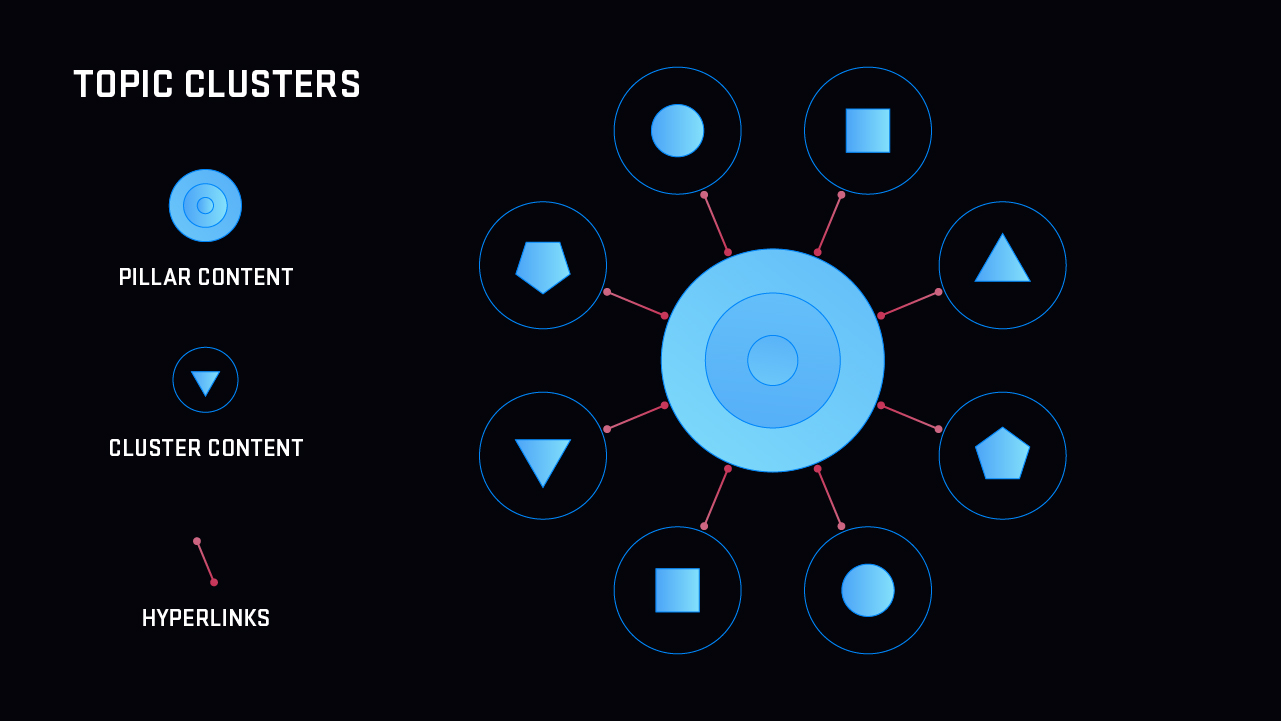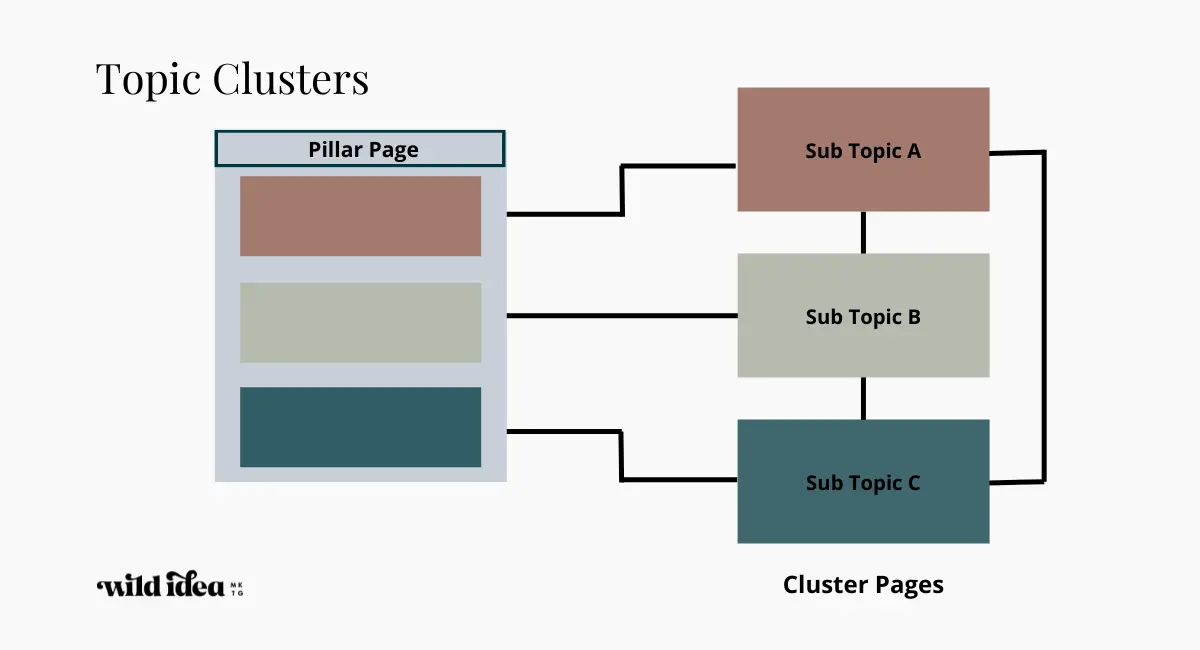
In the ever-evolving world of SEO, one strategy has proven to be a game-changer for content marketers: content clustering. As search engines become more sophisticated, they’re no longer just looking for keyword matches—they’re evaluating how well your content covers a topic in depth and how it connects with other relevant content on your site.
Content clustering is a powerful method that groups related content around a central theme or topic, creating a network of interlinked articles that reinforce each other. This not only improves user experience but also boosts your website’s topical authority, making it easier for search engines to recognize your expertise.
In this article, we’ll break down what content clustering is, why it matters, and how you can implement it effectively to enhance your SEO performance.
What Is Content Clustering and Why It Matters
At its core, content clustering is the practice of organizing content into thematic groups that revolve around a central topic. These clusters typically include a cornerstone article—a comprehensive piece that serves as the foundation—and several supporting articles that dive deeper into specific subtopics.
For example, if your main topic is “apple pie,” your content cluster might include:
- A cornerstone article: “The Ultimate Guide to Making Apple Pie”
- Supporting articles: “Apple Pie Ingredients,” “How to Bake Apple Pie,” “Low-Fat Apple Pie Recipes,” and “Apple Pie Crust Tips.”
This approach ensures that your content is structured in a way that aligns with how users search and engage with information. Search engines like Google prioritize websites that demonstrate topical authority, which means having a deep understanding of a subject and providing comprehensive, high-quality content.
Content clustering helps you build this authority by ensuring that all your content is interconnected and covers various aspects of a topic. It also makes it easier for search engines to crawl and index your site, improving your chances of ranking higher in search results.
How Content Clustering Impacts SEO Performance
Content clustering isn’t just about organization—it’s a strategic move that directly affects your SEO performance. Here’s how:
-
Boosts Topical Authority: By grouping related content, you signal to search engines that your website is an expert in a particular niche. This increases your chances of ranking for both primary and long-tail keywords.
-
Improves Internal Linking: Clusters naturally encourage internal linking, which helps distribute page authority across your site. When users click through from a supporting article to the cornerstone piece, it strengthens the overall link equity of your content.
-
Enhances User Experience: A well-structured content cluster makes it easier for users to find the information they need. Visitors can navigate from one related article to another, increasing engagement and reducing bounce rates.
-
Increases Organic Traffic: With better indexing and higher rankings, your content becomes more visible to users searching for relevant topics. This leads to increased organic traffic and better conversion rates.
-
Supports E-E-A-T (Experience, Expertise, Authoritativeness, Trustworthiness): Content clusters help you establish yourself as an authority in your niche, which is crucial for building trust with both users and search engines.
Step-by-Step Implementation Framework
Implementing content clustering requires careful planning and execution. Follow these steps to build a strong content cluster strategy:
- Define or Audit the Current Situation
- Start by identifying your core topics. These should be broad themes that are relevant to your audience and have sufficient search volume.
- Use tools like MarketMuse, Ahrefs, or SEMrush to analyze existing content and identify gaps.
-
Audit your current content to see which pieces could benefit from being grouped into clusters.
-
Apply Tools, Methods, or Tactics
- Use a content modeling tool to generate a list of related topics. For example, MarketMuse’s Research Application can help identify semantic relationships between topics.
- Ensure that each topic in your cluster has a clear intent. Avoid topics that are too vague or ambiguous, as they may lead to intent fracture—where a single query has multiple meanings.
-
Create a topic hierarchy by organizing subtopics under a parent topic. This helps structure your content in a logical flow that mirrors user behavior.
-
Measure, Analyze, and Optimize
- Track the performance of your content clusters using analytics tools like Google Analytics or Search Console.
- Monitor metrics such as organic traffic, dwell time, and bounce rate to understand how users are interacting with your content.
- Use content scoring tools to evaluate the comprehensiveness of your articles. Aim for high scores by incorporating relevant concepts and optimizing for user intent.
Real or Hypothetical Case Study
Let’s take a look at a hypothetical case study to see how content clustering can drive real results.
Scenario: A food blog wants to increase its visibility for the topic “apple pie.”
Before Clustering:
– The blog had scattered content on apple pie, including a few short posts on ingredients and recipes.
– There was no clear structure, and internal linking was minimal.
– The blog ranked poorly for key terms like “how to bake apple pie.”
After Implementing Clustering:
– The team created a content cluster centered around “apple pie.”
– They developed a cornerstone article, “The Ultimate Guide to Making Apple Pie,” and several supporting articles on ingredients, crusts, and low-fat recipes.
– They optimized internal links to guide users from supporting articles to the cornerstone piece.
– Over six months, the blog saw a 30% increase in organic traffic and a 25% improvement in average session duration.
This case study shows how content clustering can transform a disorganized content strategy into a cohesive, high-performing plan.
Tools and Techniques for Content Clustering
To effectively implement content clustering, consider using the following tools:
- MarketMuse – A powerful platform that helps identify semantic relationships between topics and provides recommendations for content optimization.
- Ahrefs – Great for keyword research and analyzing competitor content to identify opportunities.
- SEMrush – Offers insights into search intent and helps you discover related topics.
- Google Trends – Useful for identifying seasonal trends and popular search queries.
- SurferSEO – Helps with keyword clustering and semantic scoring to ensure your content is optimized for search engines.
These tools can streamline the process of identifying topics, structuring clusters, and measuring performance.
Future Trends and AI Implications
As AI continues to shape the future of search, content clustering will become even more important. Search engines like Google are increasingly relying on semantic understanding and user intent to deliver more accurate results.
With the rise of Search Generative Experience (SGE) and multimodal search, content clusters will play a critical role in helping search engines understand context and provide richer, more relevant results.
To stay ahead, focus on:
- Creating semantically rich content that covers multiple layers of a topic.
- Using AI-assisted tools to optimize content for both humans and machines.
- Building robust internal linking strategies that reflect user behavior and search intent.
By embracing these trends, you can position your website as a go-to resource for your audience and maintain a competitive edge in the evolving SEO landscape.
Key Takeaways
- Content clustering is the practice of grouping related content around a central topic to improve topical authority and internal linking.
- It enhances user experience by making it easier for visitors to find related information.
- Clusters boost SEO performance by improving indexing, engagement, and rankings.
- Tools like MarketMuse and Ahrefs can help identify and structure content clusters effectively.
- As AI and SGE continue to evolve, content clustering will become even more essential for staying competitive.
Start implementing content clustering today to build a stronger, more authoritative online presence.
Meta Title: Content Clustering — Boost Topical Authority & Internal Linking
Meta Description: Learn how content clustering strengthens topical authority, improves internal linking, and boosts SEO performance in 2025.
SEO Tags (5): content clustering, topical authority, internal linking, SEO strategy, content planning
Internal Link Suggestions: Parameter #2: Topical Depth & Relevance, Parameter #6: Semantic Keyword Mapping, Parameter #12: PAA Question Targeting
External Source Suggestions: https://www.marketmuse.com, https://ahrefs.com







